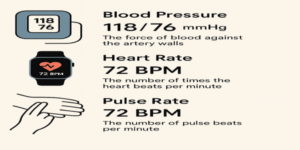The Harvard Referencing System is one of the most widely used citation and referencing styles in academic writing. It ensures that sources are acknowledged properly, helps to avoid plagiarism, and demonstrates academic integrity. This study guide provides a comprehensive overview of how to cite and reference a wide range of sources, using examples and explanations for clarity.
1.0 Assignment Writing
In order to produce strong and credible academic work, it is important to base your arguments on a wide range of reliable sources. To do this effectively, you should:
- Read widely across different types of academic material. This helps you to understand various perspectives and strengthen your arguments.
- Engage with multiple sources, such as books, journal articles, newspapers, reports, and reputable websites. Drawing on a variety of materials adds depth to your work.
- Read at the appropriate academic level, ensuring that the sources you choose are scholarly and suitable for higher education study, rather than overly simplified or non-academic.
- Use good-quality sources that are credible, well-regarded, and relevant to your topic. This ensures that your arguments are well supported and academically sound.
2.0 Citing and Referencing
In your assignments, you must demonstrate that you have engaged with relevant and high-quality sources to support your arguments. This is achieved through two essential practices:
- Providing in-text citations within the body of your work to acknowledge where specific ideas, evidence, or quotations have been taken from.
- Including a reference list and, where required, a bibliography at the end of your work.
It is important to note that:
- In-text citations are sometimes referred to as in-text references.
- Reference lists are also commonly known as References.
Together, these elements show that your arguments are well founded and that you respect the intellectual property of other authors.
3.0 Why Citing and Referencing?
Citing and referencing are fundamental aspects of academic writing, and they serve several key purposes:
- To acknowledge the work of others and ensure you avoid plagiarism, which is a serious academic offence.
- To help readers and tutors distinguish between your own original ideas and the material you have drawn from other sources.
- To demonstrate that you have relied on high-quality and reliable sources, showing the depth and credibility of your research.
- To improve the credibility, clarity, and overall presentation of your academic work.
By citing accurately, you not only give proper credit to other authors but also strengthen your own arguments through evidence-based support.
4.0 Plagiarism
Failure to cite and reference ideas, evidence, or quotations from other authors can result in accusations of plagiarism.
Plagiarism is defined as presenting someone else’s work as your own. It is considered a form of academic theft and is treated very seriously within higher education.
To avoid plagiarism, you must always record accurately and fully reference the details of every source you consult and use in your work. Careful note-taking and consistent referencing practices are essential to maintaining academic integrity.
5.0 Citation and Referencing Styles
There are several different systems used in academic writing for citation and referencing. Each discipline or institution may prefer a particular style. The most commonly used include:
- Harvard style – an author–date system.
- American Psychological Association (APA) – also an author–date system, widely used in the social sciences.
- Modern Language Association (MLA) – another author–date system, often used in the humanities.
- Modern Humanities Research Association (MHRA) – an author–date system, mainly applied in literature and language studies.
- Chicago, Vancouver, and Footnote styles – all of which are numeric systems, relying on numbers in the text linked to references or footnotes.
Important: Always check with your tutor or department which referencing system you are required to use for your assignments.
6.0 The Harvard Referencing Style
The Harvard style is one of the most widely used referencing systems in academic writing. It follows the author–date method and is built on three key elements:
- In-text citations – brief references placed within the body of your text. These usually include the author’s surname, the year of publication, and, where relevant, the page number(s).
- Reference list – a complete list of all sources you have cited directly in your work. This list should appear at the end of your assignment and be arranged in alphabetical order by author’s surname. Do not separate sources under different categories such as books, journals, newspapers, websites etc.
- Bibliography – sometimes required in addition to the reference list. A bibliography contains details of all sources consulted, including those you have read but not cited directly in your text.
Using these three elements ensures your work is transparent, credible, and academically sound.
7.0 Examples of In-text Citations
In the Harvard style, an in-text citation is used whenever you refer to someone else’s ideas, data, or words. These citations typically include the author’s surname, the year of publication, and, where necessary, the page number(s).
Examples include:
- According to Clegg (1985, p.543)…
- Barter (2003, p.258) has shown that…
- Evans and Foxall (2006, p.76) point out that…
- Reed et al. (2008, pp.30–31) suggested that…
- Several authors (Ray, 2002, p.23; Smith, 2004, p.70) conclude…
- A number of studies (Gray, 2002; Toms, 2004; Lee, 2008) have considered the Scottish economy…
Other examples:
- 25% of manufacturing jobs were lost in the 1980s (Jones, 1995, p.64).
- A recent survey (Gordon, 2001, pp.21–28) has found…
8.0 Useful Phrases for Introducing Citations
When incorporating the ideas of others into your work, it is important to introduce references smoothly. The following phrases can help you do this effectively:
- Saunders (2010) defined/ proposed/ indicated/pointed out/suggested/ showed/stated/explained/analysed/claimed……that….
- As defined/proposed/indicated/suggested/showed/stated/explained/analysed/claimed/ pointed out by Saunders (2010)….
- According to Saunders (2010)…
- To quote from Saunders (2010)…
Note: When citing a work with three or more authors, use et al. (in italics) after the first author’s surname.
9.0 When Must I Provide a Citation?
A citation is required whenever you make use of another author’s work, ideas, or findings. You must provide a reference when you:
- Quote directly from another source, using the author’s exact words.
- Paraphrase by rewriting an author’s ideas in your own words.
- Summarise arguments, theories, or research findings from a source.
- Use data, statistics, diagrams, or tables created by someone else.
- Refer to established theories, case studies, or research methods developed by other scholars.
By following these practices, you ensure your work demonstrates academic honesty and avoids plagiarism.
9.1 Quote Directly
When you present information exactly as it appears in a source, you must show this clearly by using quotation marks (“…”). A direct quote should be followed by an in-text citation, which includes the author’s surname, the year of publication, and the page number.
Example:
“Market segmentation is where the larger market is heterogeneous and can be broken down into smaller units that are similar in character” (Easy and Sorensen, 2009, p.133).
Direct quotations should be used sparingly, only when the exact wording of the original source is essential to your argument.
9.2 Paraphrase
Paraphrasing involves rewriting an author’s ideas in your own words while keeping the original meaning intact. Even though the wording is different, you must still provide a citation, as the ideas belong to the original author.
Example:
- Original: MPs were not paid a salary until 1912. In medieval times constituents sometimes paid their members and met some of the expenses of sending an MP to Westminster, but the practice died out by the end of the 17th century and thereafter MPs needed personal wealth or a personal patron in order to sustain a political career (Rush, 2005, p.114).
- Paraphrase: Until the 20th century, when MPs first began receiving salaries, a career in politics could only be maintained with personal wealth or the backing of a patron. Although financial help occasionally came from constituents in the medieval period, this practice had ended by the 17th century.
Cite? – Yes. Even though the paragraph has been re-written, the meaning remains the same, so a proper citation is required.
9.3 Summarise
Summarising involves condensing a longer passage of text into a shorter version, focusing only on the main point or essential information. Even when the text is shortened and re-written, you must still provide a citation, as the idea is not your own.
Example:
- Original: The proportion of manual workers in the ranks of the parliamentary Labour Party declined from 1945 to 1979, from approximately 1 in 4 to 1 in 10. Of the 412 Labour MPs elected in 2001, 12% were drawn from manual backgrounds (Criddle cited in Norton, 2005, p.23).
- Summary: Since 1945, the proportion of manual workers in the Labour Party has declined significantly, falling from about 25% to just 12% by 2001.
Cite? – Yes. Although the information has been shortened and re-phrased, the original idea is still being used, so a citation is required.
10.0 When is No Citation Required?
Not every statement in your work requires a citation. You do not need to reference when you are presenting:
- Your own ideas, theories, arguments, or conclusions.
- Surveys, experiments, or data that you have designed and carried out yourself.
- Your own research methods or original contributions.
- Very basic common knowledge, such as widely known facts (e.g., Glasgow is in the west of Scotland).
⚠️ Important: If you provide specific details or statistics, you must include a citation.
- Example: Glasgow is in the west of Scotland and has a population of 530,000 (cite source!)
11.0 Citing and Referring to Books
11.1 Books with One Author
In your reference list, include the author’s name, year of publication, title (in italics or underlined if italics are unavailable), place of publication, and publisher.
Reference list example:
- Ransom, D. (2002) The no-nonsense guide to fair trade. Oxford: New Internationalist.
In-text citations:
- In the 1980s, sales of blue jeans slowed and then declined (Ransom, 2002, p.100).
- According to Ransom (2002, p.100), the sales of blue jeans…
11.2 Books with Two Authors
When a book has two authors, list both in the reference list and use them in the same order in your in-text citation.
Reference list example:
- Sloman, J. and Wirde, A. (2009) Economics. 7th ed. Harlow: Pearson Education.
In-text citations:
- As Sloman and Wirde (2009, p.65) point out, unemployment rates are traditionally higher among women.
- Unemployment rates are traditionally higher among women (Sloman and Wirde, 2009, p.419).
11.3 Books with Three or More Authors
When a book has three or more authors, list all authors in the reference list. However, in in-text citations, use the first author’s surname followed by et al. (in italics), which means and others.
Reference list example:
- Solomon, M., Bamossy, G., Askegaard, S. and Hogg, M.K. (2006) Consumer behaviour: a European perspective. 3rd ed. Harlow: Financial Times.
In-text citations:
- Solomon et al. (2006, p.69) suggest that…
- People have been consumers for a long time, but consumption has only recently become a focus for study (Solomon et al., 2006, p.23).
⚠️ Do not write out all the names in the in-text citation.
❌ Solomon, Bamossy, Askegaard, and Hogg (2006, p.23)…
12.0 Citing and Referring to Books: Special Cases
12.1 Books with an Editor
When referencing a book edited by one or more people, list the editor(s) in the reference list and indicate their role with (ed.) or (eds.).
Reference list examples:
- Palmer, A. (ed.) (1996) Who’s who in world politics: from 1860 to the present day. London: Routledge.
- Newmark, L. and Peter, S. (eds.) (1999) Albanian-English dictionary. Oxford: OUP.
In-text citations:
- Palmer (1996, p.74) notes that…
- Kohl won elections in 1983, 1987, and 1990 (Palmer, 1996, p.200).
- According to an entry in Who’s who in world politics (Palmer, 1996, p.80)…
- In the Albanian-English dictionary (Newmark, 1999, p.90)…
⚠️ Note: Ensure you are not citing from a chapter that has its own author(s), as this must be referenced separately.
12.2 Books with No Date
If no publication date is available, use (n.d.) to indicate “no date”.
Reference list example:
- Hendry, S. (n.d.) Flora and fauna of Scotland. Glasgow: Collins.
In-text citation:
- Hendry (n.d., p.21) describes…
12.3 Books with No Author
If a book has no identifiable author, begin the reference with the title.
Reference list examples:
- Understanding SPSS (2009) London: SPSS Press.
- Harraps’ pocket Portuguese dictionary (1988) London: Harrap.
In-text citations:
- Understanding SPSS (2009, p.26) describes…
- Harraps’ pocket Portuguese dictionary (1988, p.65) defines…
12.4 Translations
When citing a translated book, include details of the translator in the reference list.
Reference list example:
- Vondung, K. (2000) The apocalypse in Germany. Translated from German by S.D. Ricks. Columbia: University of Missouri Press.
In-text citations:
- According to Vondung (2000, p.64)…
- In Vondung’s The Apocalypse in Germany (2000, pp.36–50), translated by Ricks…
12.5 E-books
E-books accessed online must include the access information and the date you viewed the source.
Reference list example:
- Chudley, R. and Greeno, R. (2006) Building Construction Handbook. 6th ed. Oxford: Elsevier. [online]. Available from: http://www.netlibrary.com/ [Accessed 21 January 2010].
In-text citations:
- Chudley and Greeno (2006, p.26) show that…
- (Chudley and Greeno, 2006, p.26)
⚠️ Always use “Available from:” before providing a URL, and include the date you accessed the source.
Here’s a clearer and more coherent version of your section on Citing and Referring to Journal Articles, written in a guidebook style with British spelling and bold key words:
13.0 Citing and Referring to Journal Articles
Academic journals contain articles written by different authors, therefore you must always cite the author(s) of the article, not the journal title.
13.1 Printed Journal Articles
In the reference list, give full details of the article, including the author(s), year, article title, journal title (in italics), volume, issue (if available), and the page range of the article.
Reference list example:
- Motluk, A. (2010) ‘Who killed the Maples?’, New Scientist, 16(2), pp.30–33.
In-text citations:
- The Chalk River reactor is the world’s largest supplier of radioactive isotopes (Motluk, 2010, p.30).
- Motluk (2010, p.31) concludes that…
⚠️ Note: In the reference list, always provide the page numbers for the entire article.
For in-text citations, use p. for a single page and pp. for multiple pages.
13.2 Online Journal Articles
When citing journal articles accessed online, include the URL and the date accessed.
Reference list example:
- Hogan, J. (2006) ‘Snapshot, face facts: a blow for Mars conspiracy theorists’, Nature, 443(55), p.379. [online]. Available from: http://www.nature.com/nature/journal/v443/n7110/full/443379a.html [Accessed 24 January 2010].
In-text citations:
- As Hogan (2006, p.379) notes…
- (Hogan, 2006, p.379).
13.3 Journal Articles from Databases
When using articles from library databases such as ScienceDirect, Web of Knowledge, or EBSCO, provide the full details of the article and include the database URL. If the URL is very long, shorten it to the database’s homepage.
Reference list example:
- Geraskin, S.A. and Alexakhin, R.M. (2008) ‘Effects of non-human species irradiation after the Chernobyl NPP accident’, Environmental International [online], 34(6), pp.880–897. Available from: http://www.sciencedirect.com/ [Accessed 21 January 2010].
In-text citations:
- According to Geraskin and Alexakhin (2008, p.881)…
- (Geraskin and Alexakhin, 2008, p.881).
⚠️ Tip: Avoid including very long URLs in your references – use the homepage of the database where possible.
14.0 Citing and Referring Lecture Notes
Sometimes you may need to reference lecture notes or handouts provided during your course. These should be referenced carefully, as they are not usually considered as academically rigorous as books or journal articles. Where possible, always try to use published academic sources in preference.
If you do need to reference lecture notes, use the following format:
Reference list format:
Author(s) surname, initials. (Year) Title of lecture or handout [Lecture notes or Handout]. Title of module, week or date of delivery. Place of publication: Publisher/Institution.
Example:
- Islam, M.T. (2019) Role of data, information and knowledge within management [Lecture notes]. BMP4005 Information Systems and Big Data Analysis, Week 4. Regent College London.
In-text citation example:
- According to Islam (2019)…
⚠️ Tip: Only cite lecture notes if the information cannot be found in textbooks, journal articles, or other published sources.
15.0 Digital Object Identifier (DOI)
A Digital Object Identifier (DOI) is a unique, permanent identifier assigned to digital publications such as journal articles. Unlike a standard URL, which may change or become inactive, a DOI will always link directly to the source online.
When a DOI is provided by the publisher or database (for example, ScienceDirect), it should be used in your reference list instead of the full URL.
Example of a DOI:
- doi:10.1016/j.envint.2007.12.012
Reference list example:
- Geraskin, S.A., Fesenko, S.V. and Alexakhin, R.M. (2008) ‘Effects of non-human species irradiation after the Chernobyl NPP accident’, Environmental International [online], 34(6), pp.880–897. Available from: doi:10.1016/j.envint.2007.12.012 (Accessed 21 January 2010).
Using a DOI makes your references more reliable, as the source can always be located even if website addresses change.
16.0 Citing and Referring to Newspapers
When referencing newspaper articles, always cite the author of the article (not the newspaper itself), unless no author is listed.
14.1 Printed Newspaper Articles
In the reference list, include the author’s name, year of publication, article title, newspaper title (in italics), date, and page number.
Reference list example:
- Macleod, A. (2010) ‘Public sector pay freeze’, The Times, 21 January, p.3.
In-text citations:
- Macleod (2010, p.3) notes…
- Macleod’s article in The Times (2010, p.3) points out…
14.2 Newspaper Articles with No Author
If no author is given, begin the reference with the newspaper title.
Reference list example:
- The Times (2010) ‘Diplomacy without arms’, The Times, 1 February, p.2.
In-text citation:
- An article in The Times (2010, p.2) argues…
14.3 Online Newspaper Articles
When citing online newspaper articles, include the author’s name, year, article title, newspaper title (in italics), date of publication, followed by [online], the URL, and the date accessed.
Reference list example:
- Travis, A. (2010) ‘Crime drops 8% despite recession’, The Guardian, 21 January. [online]. Available from: http://www.guardian.co.uk/uk/2010/jan/21/police-figures-unexpected-drop-crime [Accessed 3 January 2010].
In-text citations:
- According to Travis (2010)…
- An article in The Guardian by Travis (2010)…
⚠️ Note: For online newspapers, page numbers are not required.
15.0 Citing Websites and Webpages
When referencing online sources, such as websites or webpages, it is important to provide full details so that readers can easily locate the material. Always include the author or organisation, the year of publication or update, the title of the webpage (in italics), the phrase [online], the URL, and the date accessed.
15.1 Example 1 – Website (organisation as author)
Reference list entry:
- BBC (2010) Obama makes jobs priority [online]. Available from: http://news.bbc.co.uk/1/hi/world/americas/8484400.stm [Accessed 21 January 2010].
In-text citation:
- A report by BBC (2010) argues…
15.2 Example 2 – Government Publication Online
Reference list entry:
- H.M. Treasury (2009) Reforming financial markets [online]. London: TSO. Available from: http://www.hm-treasury.gov.uk/d/reforming_financial_markets080709.pdf [Accessed 25 January 2010].
In-text citations:
- According to a H.M. Treasury report (2009, p.16)…
- In Reforming financial markets (H.M. Treasury, 2009, p.20), it is stated…
⚠️ Note: When citing online documents such as PDFs, always include page numbers if available.
15.3 Example 3 – Online Report
Reference list entry:
- Kenway, P. (2008) Addressing in-work poverty [online]. Available from: http://www.jrf.org.uk/publications/addressing-work-poverty [Accessed 21 January 2010].
In-text citations:
- Kenway’s (2008, pp.10–13) findings suggest…
- A recent report from the Joseph Rowntree Foundation entitled Addressing in-work poverty (2008) considers a range of issues.
15.4 Example 4 – Corporate Website
Reference list entry:
- Vodafone Group Plc (2010) Code of ethical purchasing [online]. Available from: http://www.vodafone.com/start/responsibility/supply_chain/code_of_ethical_purchasing.html [Accessed 21 January 2010].
In-text citation:
- According to Vodafone’s Code of Ethical Purchasing (2010)…
16.0 Citing and Referring to Television Programmes
When referencing television programmes, you should include the programme title, the year of broadcast, the format (e.g., [TV programme]), the channel, the date, and the time of transmission. If the programme was accessed online, also provide the URL and the date accessed.
16.1 Example – Broadcast on Television
Reference list entry:
- Newsnight (2010) [TV programme]. BBC2, 25 January, 22:30.
In-text citations:
- In an interview with Newsnight (2010)…
- Newsnight (2010) examined…
16.2 Example – Accessed Online
Reference list entry:
- Newsnight (2010) [TV programme]. BBC2, 25 January, 22:30. Available from: http://www.bbc.co.uk/iplayer/newsnight [Accessed 25 January 2010].
In-text citations:
- According to Newsnight (2010)…
- The programme Newsnight (2010) highlighted…
17.0 Quoting Directly
When you use an author’s exact words, you must present them within quotation marks (“…”) and provide a full in-text citation with the author’s surname, year of publication, and the page number.
17.1 Quoting from One Author
In-text citation examples:
- According to Royle (2000, p.167), ‘the British state was strong because it was militarily effective and relatively efficient at raising taxes.’
- The state in Britain was strong because it was ‘militarily effective and relatively efficient at raising taxes’ (Royle, 2000, p.167).
- According to Royle (2000, p.167), ‘the British state was strong because it was … relatively efficient at raising taxes.’
Reference list entry:
- Royle, E. (2000) Revolutionary Britain: Reflections on the Threat of Revolution in Britain, 1789–1848. Manchester: Manchester University Press.
⚠️ Note: Use an ellipsis (…) to indicate where words have been omitted from the original text.
17.2 Quoting from Two Authors
Reference list entry:
- Evans, M. and Foxall, G. (2006) Consumer Behaviour. Chichester: John Wiley & Sons.
In-text citation examples:
- According to Evans and Foxall (2006, p.176), ‘cohesiveness is also closely connected with the affective nature of the group.’
- ‘Cohesiveness is also closely connected with the affective nature of the group’ (Evans and Foxall, 2006, p.176).
17.3 Quoting from Three or More Authors
When a source has three or more authors, use the surname of the first author followed by et al. (in italics).
Reference list entry:
- Solomon, M., Bamossy, G., Askegaard, S. and Hogg, M.K. (2006) Consumer Behaviour: A European Perspective. 3rd ed. Harlow: Financial Times.
In-text citation examples:
- Solomon et al. (2006, p.176) note that ‘the use of celebrity endorsers is an expensive but commonly used strategy.’
- ‘The use of celebrity endorsers is an expensive but commonly used strategy’ (Solomon et al., 2006, p.176).
17.4 Quoting Long Passages
For longer quotations (usually more than 40 words), do not use quotation marks. Instead, indent the text, leave a line space above and below, and keep the citation at the end.
Example:
According to Solomon et al. (2006, p.177):
The effectiveness of celebrities as communications sources often depends upon their perceived credibility. Consumers may not trust a celebrity’s motives for endorsing a product or they may question the star’s competence to evaluate the product’s claims.
Therefore …
18.0 Secondary Referencing
Secondary referencing occurs when the author of the source you are reading refers to the work of another author, and you wish to include that earlier work in your own writing.
For example: if you are reading Clarke’s book, and Clarke refers to an idea by Taylor, but you cannot access Taylor’s original work, you may cite Taylor as a secondary reference through Clarke.
How to Cite in Text
- According to Taylor, cited in Clarke (2008, p.17)…
- Clarke (2008, p.17), citing Taylor, notes that…
- (Taylor cited in Clarke, 2008, p.17).
Reference List
In your reference list, you must include only the source you have actually read. In this case, Clarke would appear, not Taylor (unless you have also accessed Taylor’s original work).
⚠️ Tip: Use secondary referencing sparingly. Wherever possible, you should always try to locate and reference the original source directly.
19.0 Top Tips
To maintain academic integrity and avoid errors in your work, always ensure that your citations and references are:
- Complete – include all the necessary details for every source.
- Accurate – double-check spelling, dates, and page numbers.
- Consistent – follow the same referencing style throughout your assignment.
💡 A practical way to achieve this is by keeping clear notes of all the sources you have used and where you found them as you carry out your research.
20.0 Further Information
If you would like additional guidance on referencing and managing sources, the following resources are highly recommended:
Pears, R. and Shields, G. (2019) Cite them right: the essential referencing guide. 11th ed. London: Red Globe Press.









